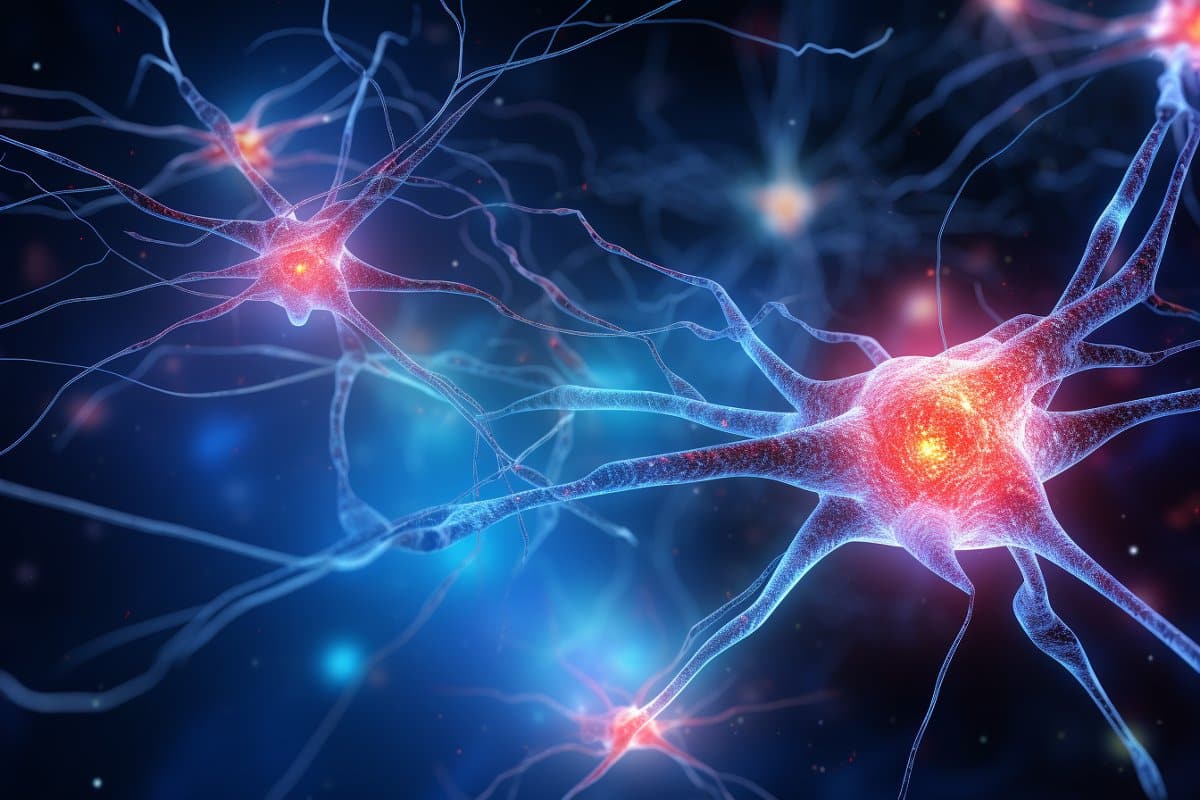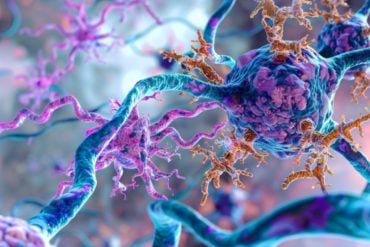Summary: Neurodegenerative diseases share a common factor: protein misfolding and deposits in the brain. Misfolded proteins can lead to toxic activity or the loss of the protein’s physiological function, causing damage to neurons.
Recent research explores the cross-seeding phenomenon, where misfolded proteins in one disease can induce the aggregation of others. The study specifically focuses on the interaction between the prion protein and TDP-43, shedding light on how they collaborate to impact neurodegenerative diseases.
Key Facts:
- Protein misfolding is a common factor in neurodegenerative diseases like Alzheimer’s and Parkinson’s.
- Cross-seeding occurs when misfolded proteins from one disease trigger aggregation of other proteins.
- The study reveals how the prion protein and TDP-43 interact, affecting neuronal signaling.
Source: RUB
The causes of neurodegenerative diseases such as Alzheimer’s disease, Parkinson’s disease, frontotemporal dementia and prion diseases can be many and varied. But there is a common denominator, namely protein misfolding and the occurrence of protein deposits in the brain.
“Various approaches and models have shown that misfolded proteins play a crucial role in the disease process,” says Jörg Tatzelt.

“Still, there’s an ongoing debate about the nature of the harmful protein species and how misfolded proteins selectively damage specific neurons.”
Studies on genes associated with pathologies have revealed two basic mechanisms by which misfolded proteins can lead to neurodegeneration: Firstly, misfolding can cause the protein to acquire toxic activity. Secondly, the misfolding can lead to a loss of the physiological function of the protein, which impairs important physiological processes in the cell.
“The assumption used to be that every neurodegenerative disease was characterized by the misfolding of a specific protein,” explains Jörg Tatzelt.
“However, it has since been shown that misfolded proteins that are produced more frequently in one disease can also induce the aggregation of other proteins, a mechanism referred to as cross-seeding.”
The prion protein and TDP-43
TDP-43 (TAR DNA-binding protein 43) is a protein that helps to translate genetic information into specific proteins. It thus helps to maintain the protein balance in nerve cells. The clumping of TDP-43 in the cell is a characteristic feature in the brains of patients suffering from amyotrophic lateral sclerosis or frontotemporal dementia.
Misfolding of the prion protein triggers prion diseases such as Creutzfeldt-Jakob disease. All research findings to date indicate that the misfolded prion protein acquires toxic activity. However, the exact mechanisms by which disease-associated prion proteins trigger the death of nerve cells are only partially understood.
TDP-43 loses its physiological function through PrP-mediated cross-seeding
Using in vitro and cell culture approaches, animal models and brain samples from patients with Creutzfeldt-Jakob disease, the researchers showed that misfolded prion proteins can trigger the clumping and inactivation of TDP-43.
The prion proteins interact with TDP-43 in vitro and in cells, thus inducing the formation of TDP aggregates in the cell. As a result, TDP-43-dependent splicing activity in the cell nucleus is significantly reduced, leading to altered protein expression.
“Prion protein and TDP-43 are partners in crime in neurodegenerative diseases, so to speak,” says Jörg Tatzelt.
An analysis of brain samples showed that in some Creutzfeld-Jacob patients, TDP-43 aggregates were found alongside the prion protein deposits. This study has revealed a new mechanism of how disease-associated prion proteins can affect physiological signaling pathways through cross-seeding.
About this genetics and neurology research news
Author: Meike Driessen
Source: RUB
Contact: Meike Driessen – RUB
Image: The image is credited to Neuroscience News
Original Research: Closed access.
“Cross-Seeding by Prion Protein Inactivates TDP-43” by Jörg Tatzelt et al. Brain
Abstract
Cross-Seeding by Prion Protein Inactivates TDP-43
A common pathological denominator of various neurodegenerative diseases is the accumulation of protein aggregates. Neurotoxic effects are caused by a loss of the physiological activity of the aggregating protein and/or a gain of toxic function of the misfolded protein conformers. In transmissible spongiform encephalopathies or prion diseases, neurodegeneration is caused by aberrantly folded isoforms of the prion protein (PrP).
However, it is poorly understood how pathogenic PrP conformers interfere with neuronal viability. Employing in vitro approaches, cell culture, animal models and patients’ brain samples, we show that misfolded PrP can induce aggregation and inactivation of TAR DNA-binding protein-43 (TDP-43).
Purified PrP aggregates interact with TDP-43 in vitro and in cells and induce the conversion of soluble TDP-43 into non-dynamic protein assemblies. Similarly, mislocalized PrP conformers in the cytosol bind to and sequester TDP-43 in cytosolic aggregates.
As a consequence, TDP-43-dependent splicing activity in the nucleus is significantly decreased, leading to altered protein expression in cells with cytosolic PrP aggregates. Finally, we present evidence for cytosolic TDP-43 aggregates in neurons of transgenic flies expressing mammalian PrP and Creutzfeldt–Jakob disease patients.
Our study identified a novel mechanism of how aberrant PrP conformers impair physiological pathways by cross-seeding.






